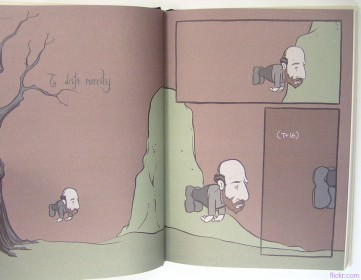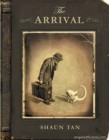Graphic Novels for Both Genders
In David J’s Place we have many non-superhero graphic novels for your enjoyment. I know you already know that, but it’s good to be reminded every now and then. For the most part, these graphic novels tell stories of love, loss and hope that are common to other media like movies and traditional novels. Yet these examples tell those stories as only graphic novels can, relying largely on clever and insightful artwork.
 Brain Camp, by Susan Kim, Laurence Klavan and Faith Erin Hicks
Brain Camp, by Susan Kim, Laurence Klavan and Faith Erin Hicks
Both Jenna, whose parents expect her to be a classical music superstar, and Lucas, whose abusive alcoholic mother thinks he’s a loser are sent to Camp Fielding to be turned into “winners.” But of course, not all goes as planned as spooky and funny events occur.
The Arrival is an extraordinary wordless graphic novel that tells the story of a man who moves to a foreign land to secure a job. And while the plot may not be complex, the novel engages the reader through the mysteries and details that lie within each frame of the artwork. *Jeff Smith, author of the Bone graphic novels calls it “shockingly imaginative.” And unlike Emily the Strange, it’s utterly void of sarcasm.
 Emily the Strange, created by Rob Reger
Emily the Strange, created by Rob Reger
As the title suggests, Emily is strange. And as the cover of her first graphic novel suggests, she’s dark, lost, more dark and also bored. So Emily’s imagination is usually wandering, leading us into, not stories really, but black, white, red and gray-colored episodes of her life. These episodes are quite funny, as Emily is uncompromisingly sarcastic. Surprised? I understand that young men may not want to read the musings of a thirteen-year-old girl, but if you like goth-tinged satire, give Emily a try. But of course, she doesn’t care whether you read about her or not.
 Mother, Come Home, by Paul Hornschemeier
Mother, Come Home, by Paul Hornschemeier
The first few pages of Mother, Come Home illustrate how graphic novels can express what other media cannot. While listening in on a man’s random thoughts, we learn that he is looking for someone whom he misses very much. But through the artwork, which shows his sagging body floating listlessly over a variety of landscapes, we understand the depth of his sadness and that the loss of this person has caused him to become lost himself. In a movie this might seem silly, and in a novel the thick melancholy essence of this scene could be described but not quite communicated to the reader. Basically, words tell while artwork shows. Of course, I’m not saying that graphic novels are superior to traditional novels. Oh yeah, the rest of the novel, about the coming to terms with that lost, is as compelling as the first few pages.

*amazon.com












